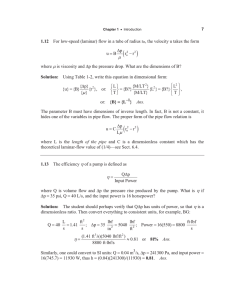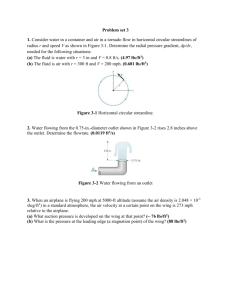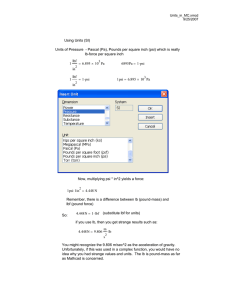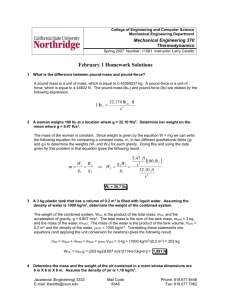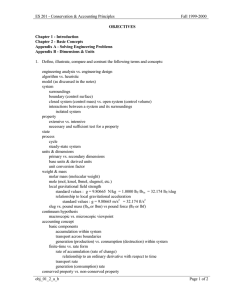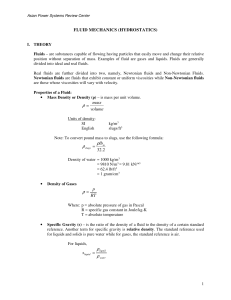ME 200 – Fall 2015 Homework#1 Due Friday, September 4, 2015
advertisement
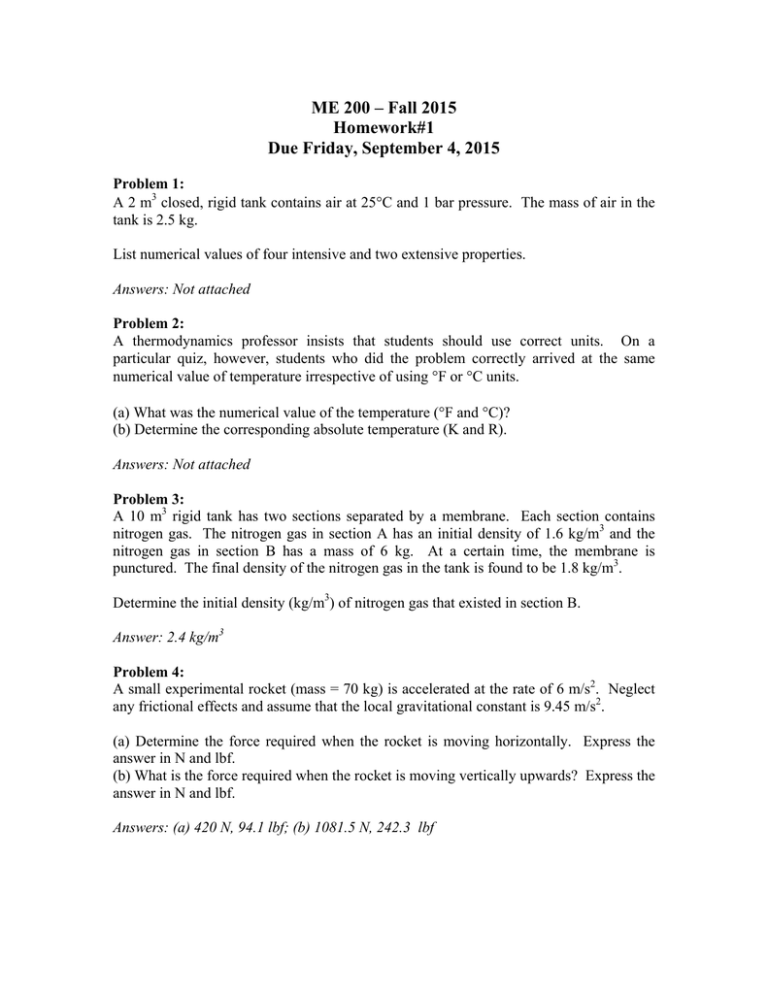
ME 200 – Fall 2015 Homework#1 Due Friday, September 4, 2015 Problem 1: A 2 m3 closed, rigid tank contains air at 25C and 1 bar pressure. The mass of air in the tank is 2.5 kg. List numerical values of four intensive and two extensive properties. Answers: Not attached Problem 2: A thermodynamics professor insists that students should use correct units. On a particular quiz, however, students who did the problem correctly arrived at the same numerical value of temperature irrespective of using F or C units. (a) What was the numerical value of the temperature (F and C)? (b) Determine the corresponding absolute temperature (K and R). Answers: Not attached Problem 3: A 10 m3 rigid tank has two sections separated by a membrane. Each section contains nitrogen gas. The nitrogen gas in section A has an initial density of 1.6 kg/m3 and the nitrogen gas in section B has a mass of 6 kg. At a certain time, the membrane is punctured. The final density of the nitrogen gas in the tank is found to be 1.8 kg/m3. Determine the initial density (kg/m3) of nitrogen gas that existed in section B. Answer: 2.4 kg/m3 Problem 4: A small experimental rocket (mass = 70 kg) is accelerated at the rate of 6 m/s2. Neglect any frictional effects and assume that the local gravitational constant is 9.45 m/s2. (a) Determine the force required when the rocket is moving horizontally. Express the answer in N and lbf. (b) What is the force required when the rocket is moving vertically upwards? Express the answer in N and lbf. Answers: (a) 420 N, 94.1 lbf; (b) 1081.5 N, 242.3 lbf Problem 5: A diver is snorkeling 10 feet under water in coral reefs off the east coast of Florida. At this location, the density of water is 62 lbm/ft3, the atmospheric pressure is 14.7 psia, and local acceleration due to gravity is 32 ft/s2. Which of the following is (are) the correct pressure on the ear drums of the driver? 616.65 lbf/ft2 (absolute) 616.65 lbf/ft2 (gauge) 4.28 psia 4.28 psig 18.98 psia 18.98 psig Answers: Not attached Problem 6: Fresh water and sea water flowing in parallel horizontal pipelines are connected to each other by a double U-tube manometer, as shown below. Assume that the density of fresh water is 996 kg/m3, density of sea water is 1035 kg/m3, density of mercury is 13,529 kg/m3, and density of air is 1.2 kg/m3. (a) Determine the pressure difference (kPa) between the two pipelines. (b) Can the air column be ignored in your analysis? (c) If the air is replaced with oil of specific gravity 0.72, then what is the pressure difference (kPa) between the two pipelines? Can the oil column be neglected? Answers: (a) 3.36 kPa; (b) Not attached; (c) 8.28 kPa, Not attached

